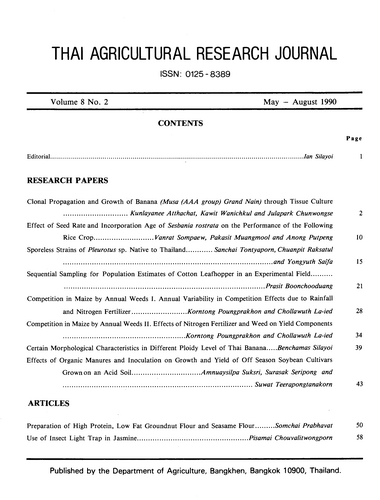Sequential Sampling for Population Estimates of cotton Leafhopper in an Experimental Field
Abstract
The objective of the study was to compare estimates of population density of cotton leafhoppers in an experimental field by a sequential sampling plan and a sampling plan with a fixed sample size. Data collection was undertaken in an experimental cotton field at the Nakon Sawan Field Crops Research Centre in central Thailand. Leafhopper counts were made in a total of 1073 plants.
For sequential sampling, the distribution of the number of cotton leafhoppers per plant was found to fit a negative binomial. when m = the mean of the number of cotton leafhoppers per plant at the economic threshold for spraying, the hypotheses were tested where H0 : m = 2.5 and H1 : m = 5.0, using a = B = 0.1; the two decision lines were d < 3.493n - 15.824 and d > 3.493n + 15.824 where d = the total number of cotton leafhoppers found on the number (n) of cotton plants selected. For sequential sampling, the number of sample plants required could be reduced by more than 50 percent when compared with the sampling method using a fixed sample size.
Downloads
Published
How to Cite
Issue
Section
License

This work is licensed under a Creative Commons Attribution-NonCommercial-NoDerivatives 4.0 International License.
Thai Agricultural Research Journal



